The 4 Best Crisis Management Software to Use in 2026
Table of contents
96% of organizations have faced crisis in the past two years. Most of those disruptions (76%) had at least medium-to-strong impact. That’s according to PwC. So, it’s time to think about your crisis management seriously!
Crisis management software is a tool that helps organizations identify, prepare for, respond to, and recover from emergencies and unexpected, critical events. It discovers harmful patterns, streamlines communication, coordinates tasks, and provides crucial information to manage crises effectively.
The stats I shared above reveal the brutal truth: crises are inherent in business.
What can you do about that fact?
You have two paths to follow:
- Ignore possible crises because it will never happen to you.
- Accept that crisis is an inherent part of business and prepare your organization as much as you can.
I believe that, as a reasonable human being, you choose the second option.
If so, let’s dive into the world of crisis management software!
Top Crisis Management Software:
- Brand24 – for the PR crisis management
- D4H – for real-life emergency management
- Noggin – for protecting and curing organizational resilience
- Splunk Enterprise Security – for cyber threats and data breaches
01 Brand24 – for the PR crisis management
Brand24 is a comprehensive & AI-supported media monitoring tool that allows you to track online conversations around your brand.
It’s superintelligent, extremely athletic, and exceptionally fast guard of your online reputation.
If I need to personalize Brand24, it would be a fusion of Albert Einstein, Usain Bolt, and Arnold Schwarzenegger in their prime. No weak points!
Brand24 identifies the sentiment behind brand mentions, detects anomalies, sends emergency alerts in the case of brand crisis, and uses AI to analyze emotions & most influential platforms spreading the news about the brand.
The tool has access to nearly all public data sources, including:
- Social media platforms (Facebook, Instagram, Twitter, YouTube, TikTok, LinkedIn, Reddit, Twitch, Quora, Telegram)
- Blogs & websites
- Videos
- Podcasts
- Forums
- Review sites & apps
What’s important is that Brand24 collects both tagged & untagged mentions.
The easiest way to explore Brand24’s capabilities is real-life example.
Rockstar Games is one of the most recognizable gaming companies worldwide.
Even people outside the gaming community have heard about titles like GTA or Red Dead Redemption. Both are Rockstar Games children.

I am a big fan of these games. Besides, I’m deeply interested in and upcoming release of GTA 6.
Therefore, I created a project in Brand24 to follow all the mentions about the company.
And you know what?
I am shocked at how many brand crises the company faced in just three months!
This is the Rockstar Games’ Sentiment chart for the first quarter 2024.
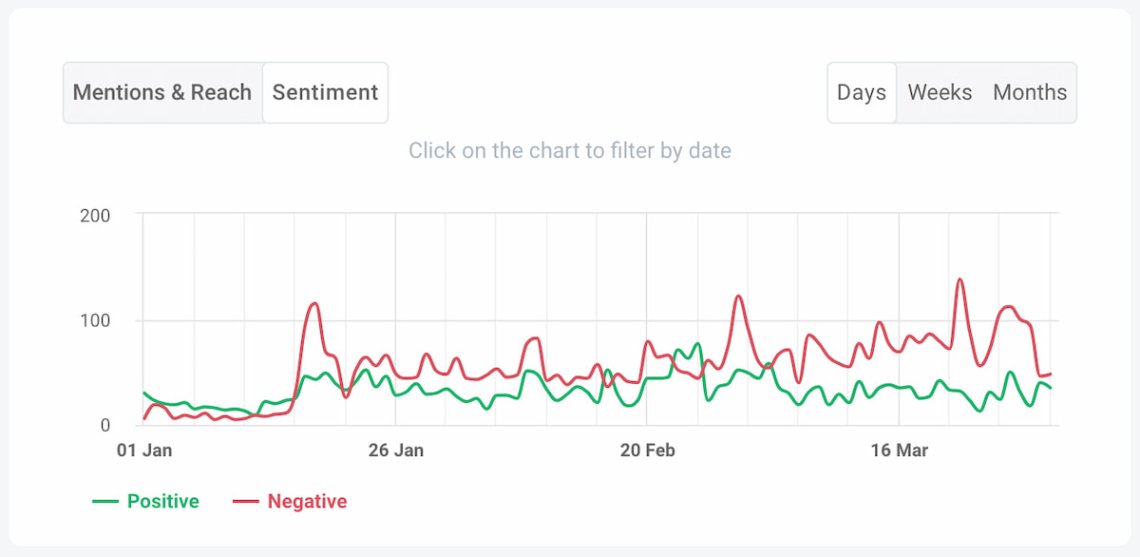
Sentiment analysis is a method of analyzing data to identify the author’s intent (positive, neutral, or negative).
Brand24 automatically checks the language surrounding the particular mention and rates the sentiment.
It gives you an accurate knowledge of how people feel about your brand, helps you identify pain points, and, in general – monitors your brand reputation in a real-time.
You can see the combined results on a Sentiment chart (above).
It’s evident that sentiment towards Rockstar Games is terrible.
There are many more negative mentions than positive ones.
Moreover, Rockstar Games’ reputation is constantly worsening!
Just look at the brand’s Reputation Score.

Reputation Score is a metric that presents the level of trust and credibility of the brand.
The lower the score, the worse for the company.
This metric is great for getting a broad picture regarding your situational awareness.
As you can see, the blue line on the chart reflects the current tendency.
Regarding reputation, Rockstar Games started the year off weakly (-8). And then it only got worse (-34 by the end of the first quarter).
Okay, but how can you check the details? What caused that serious and ongoing brand crisis?
Let’s ask the AI!
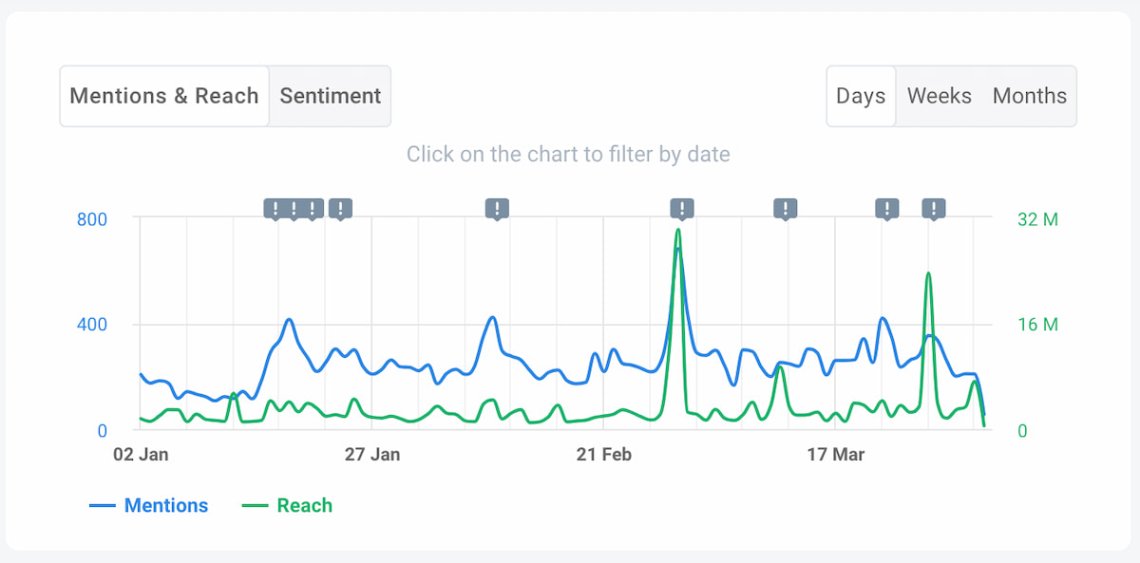
Once you change the view from the Sentiment chart to the Mentions & Reach chart, you’ll notice exclamation marks on it. They point at anomalies.
The AI Anomaly Detector is a Brand24 feature that is responsible for discovering unusual patterns regarding the monitored project.
For example, if there are 3x more daily mentions than usual, or suddenly you receive 500 positive mentions in 20 minutes, the Anomaly Detector displays the flag.
It informs you: “Hey dude, something unusual happened!”.
Moreover, the AI scans the web to find out what caused the anomaly.
Just click on the exclamation mark, and you’ll get a brief summary.
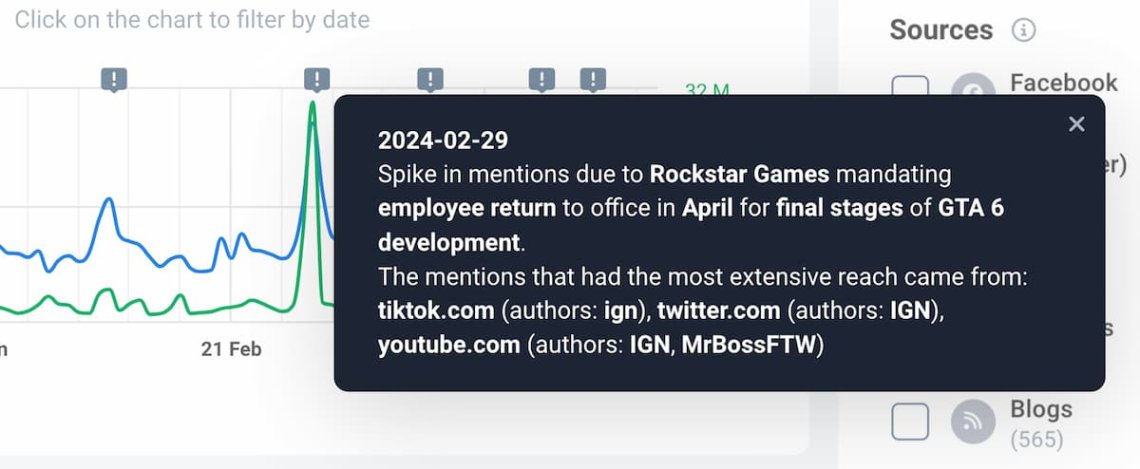
As you see, the most significant spike from February 29th was caused by the unveiling that Rockstar Games forces their employees to return to the office to work on GTA 6.
It’s a usual practice in the gaming industry. But Rockstar Games’ community perceived it very negatively. And the brand didn’t address their rage.
Other discoveries undermining the Rockstar Games’ reputation found by Anomaly Detector include:
- The trademark dispute over a new company’s logo;
- Removing the Rockstar Editor in GTA 5 and GTA Online on older consoles;
- Rumors of GTA 6 release delay.
Obviously, the current Rockstar Games reputation crisis is a result of multiple causes.
Ok, we could spend hours and hours exploring Brand24’s emergency management capabilities. Let’s jump to one more great AI feature – Brand Assistant.
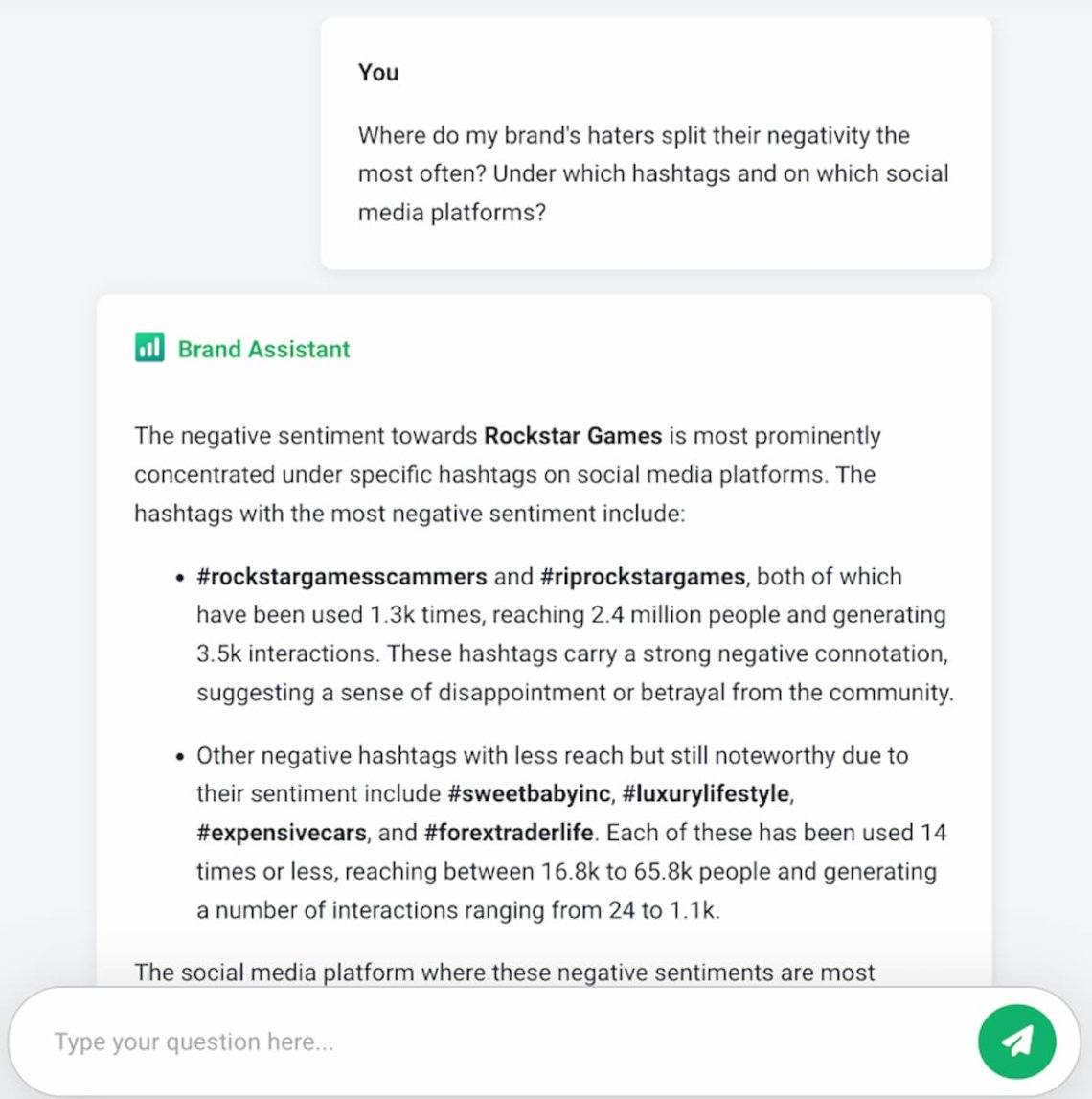
What are the most harmful channels for Rockstar Games?
Where do their haters split their negativity on a daily basis?
How can we achieve the best short-term results in our brand’s communication and marketing?
These are examples of questions you could ask the AI Brand Assistant.
The AI Brand Assistant is an advanced chat where you can ask for personalized analyses regarding your brand.
For example, you can get summaries of key statistics, trend identification, strategic recommendations, ideas on how to deal with recent social media crises, and competitive analyses.
It’s like an internal ChatGPT but fueled with the data about your brand and trained to serve your analytical needs.
Key features:
- Real-time brand mentions tracking
- Sentiment Analysis
- Compare Periods
- AI Brand Assistant
- AI Anomaly Detector
- AI Metrics Analysis
- Reputation Score
- Presence Score
- Context Analysis
- Storm Alerts
- Customizable Reporting
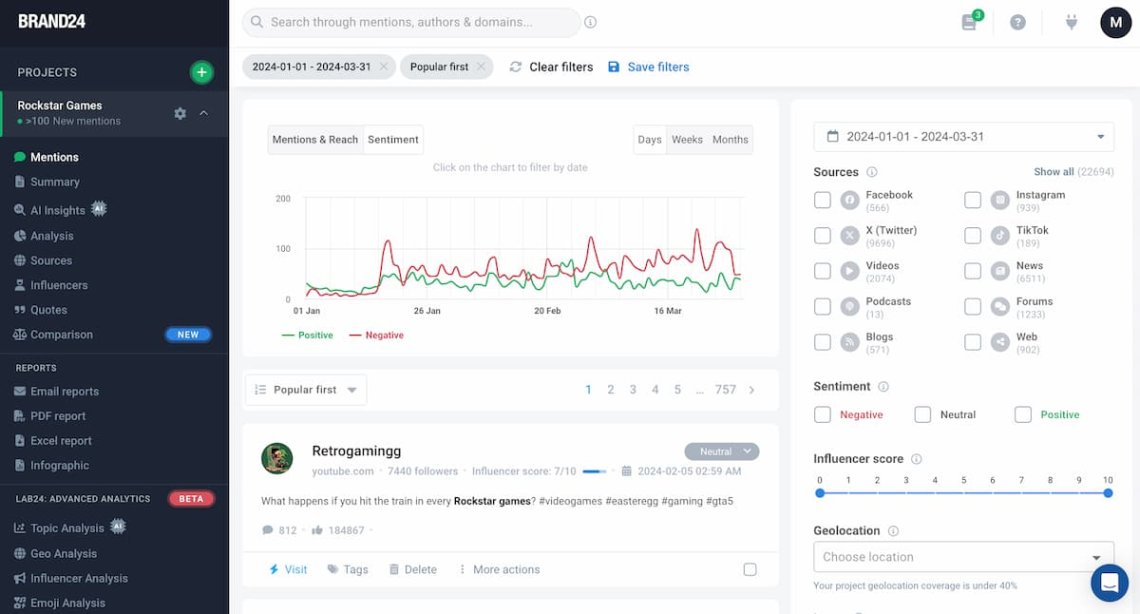
02 D4H – for real-life emergency management
If you are looking for software where you can build up your action plan in the case of real-life emergencies & crises, D4H might be a fit.
D4H is a cloud-based incident management software for emergency response that enables coordinating actions to recover from a crisis.
The tool can support emergency operations and build emergency response plans in multiple sectors, including government, public safety, oil and gas, pharmaceutical, aviation, and corporate.
Moreover, D4H allows the management of response teams and all their equipment.
It also offers analytics features allowing you to identify crisis patterns and trends to anticipate & prevent emergency situations in the future.
D4H is a great crisis management software for all organizations that might face serious critical situations that could harm people, infrastructure, and the environment.
Most users praise D4H’s simplicity. The dashboard, although very old-school, is practical and easy to use.
Key features:
- Operations Center
- Team Manager
- Control Room
- Incidents Analytics
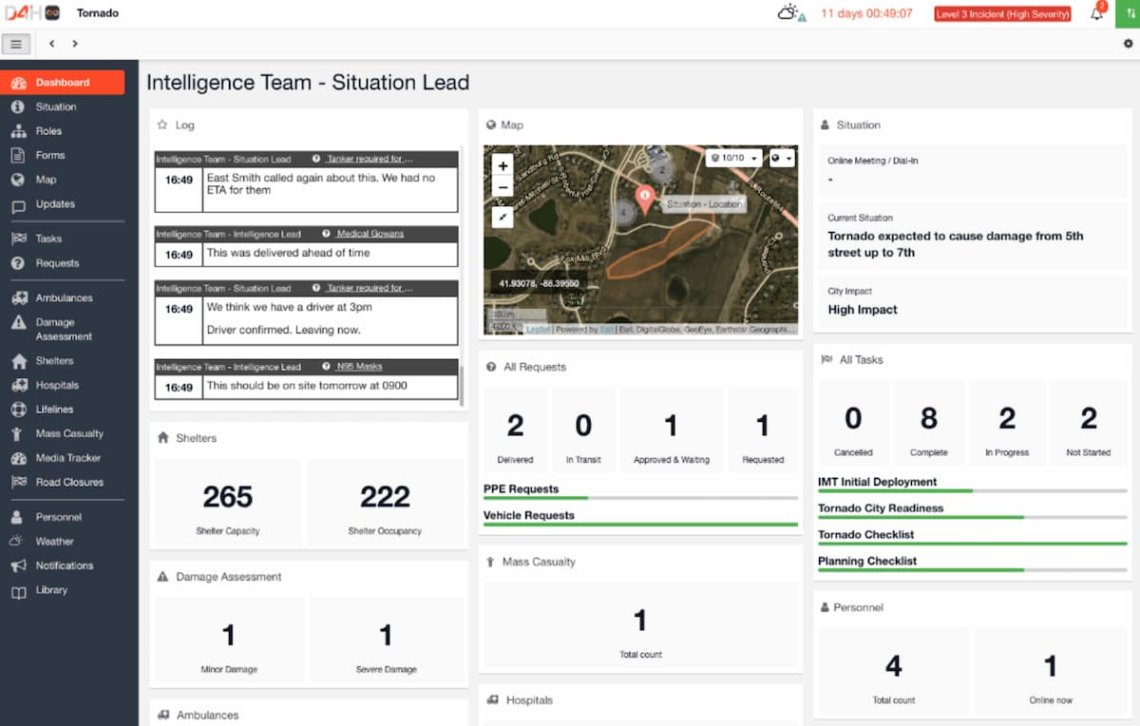
03 Noggin – for protecting and curing organizational resilience
Noggin is a situational awareness software designed to help organizations manage safety, security, and emergency situations more effectively.
It’s a kind of digital toolkit that helps businesses keep their people safe and their operations running smoothly, even when unexpected things happen.
Noggin offers a wide range of features regarding the whole crisis management process to keep your business continuity.
It provides you with information regarding situational awareness (by gathering data from maps, social media, and so on) and notifies contact people at crisis management teams.
Later on, you can proceed with post-incident reviews, analytics, and reports.
To get your crisis team ready, you could even conduct exercises in the case of a crisis situation.
Any downsides? Well, for small and medium-sized businesses, the Noggin’s pricing might be a bit challenging.
Key features:
- Business Impact Analysis
- Incident management
- Risk management
- Analytics & reporting
- Email alerts
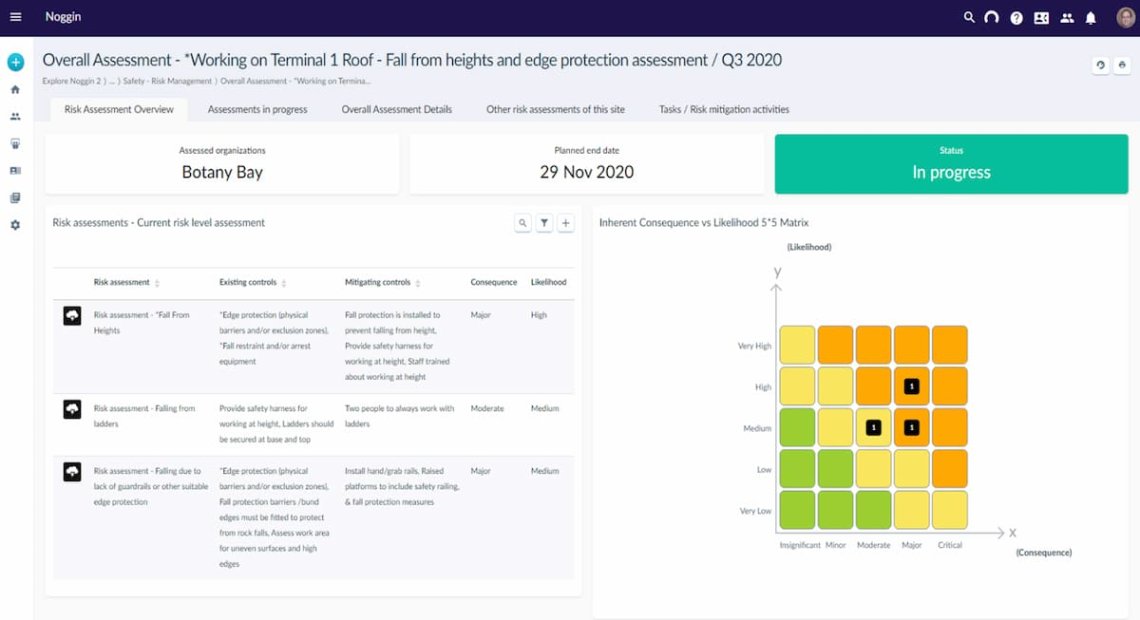
04 Splunk Enterprise Security – for IT and data breaches
Splunk Enterprise Security (ES) is a security information and event management (SIEM) software.
It acts like a watchdog for your computer systems, helping keep out hackers and preventing cybersecurity attacks.
If any data breach happens, Splunk ES can quickly analyze and organize data related to the breach.
This means you can see where the attack started, what got affected, and how to stop it from getting worse.
After dealing with the immediate crisis, Splunk ES helps you review everything that happened, offering insights that can prevent future incidents.
What’s more, Splunk ES enables the simulation of cyberattacks. Thanks to this feature, you can identify the weak points in your system and seal them.
Key features:
- Advanced threat detection
- Incident management
- Threat hunting
- Splunk AI support
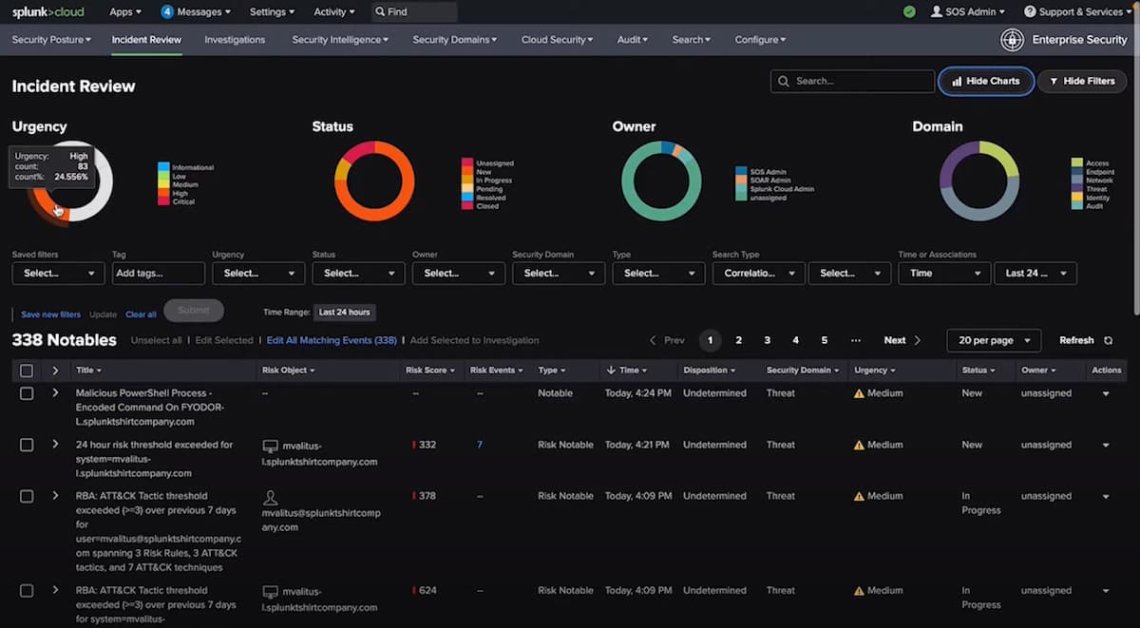
What are the most important features of great crisis management software?
As you can see, the brand or company can face many different types of crises.
Therefore, finding a unified set of features a perfect crisis management software should offer is difficult.
However, most of the top crisis & incident management software have some important features in common:
- Real-time data monitoring & analysis to stay informed about the current crisis status;
- Automated mail or in-app alert notifications about a crisis to react as quickly as possible;
- Multi-account cooperation on a project for an efficient data flow in the case of emergency;
- Simple & intuitive dashboard for an effortless and timely navigation throughout the project;
- Advanced analytics & reporting features that allow you to discover the causes of the crisis to reduce the risk for the future.
How to choose a crisis management software?
Okay, many words have been written about crisis management tools. How to choose the most suitable one (or two)?
I suggest you follow these 3 simple steps.
Step 1: Define the crises you might struggle with.
Each type of organization faces different types of crises and disruptions.
Therefore, before choosing a crisis management software, you must do your homework and discover the most probable emergency situations in your industry or for your type of organization.

Discover our client’s success story — read the case study.
How? Find reports, use media monitoring to discover crises in your industry, or simply do competitor analysis to uncover the most typical emergency situations in your niche.
Step 2: Calculate your budget.
Money is – next to the scope of application – the most important factor when choosing a crisis management software.
Calculate how much of your organization’s budget you can devote to emergency management software. If you’re not an industry tycoon with almost unlimited funds, that step will limit your choice.
Step 3: Test a crisis management software
Crisis management tools usually allow testing of their capabilities and features, i.e. by a free trial or requesting a demo.
Don’t miss that opportunity! Only by testing the software in practice you can discover whether it is a suitable solution for your needs.
Conclusion
Let’s sum all the information up.
Crises are integral to virtually every organization: companies, NGOs, foundations, states, and countries.
The best way to deal with them is to develop procedures and support crisis management with appropriate tools.
Choosing the tool depends on many factors: the type of your organization, the risks you can deal with, and the size of your budget.
However, there is a set of capabilities each crisis management software should have.
These are real-time data monitoring, automated notifications about crises to control their progress, team cooperation features, an easy dashboard, and handy analytics.
Final thoughts:
- Different crises require different tools. Pick one that fits your organization and deals with the risks you’re most likely to encounter.
- Even a small reputation problem can grow big (like what happened with Rockstar Games) if the organization initially ignores it.
- Nearly every type of risk can be anticipated. It’s up to you to create emergency procedures.
- Brand24 is the best crisis management tool if you care about your brand reputation.
Ready to build your organization’s resilience and resolve the inevitable crisis? Sign up for a 14-day free trial and test the Brand24 tool!



